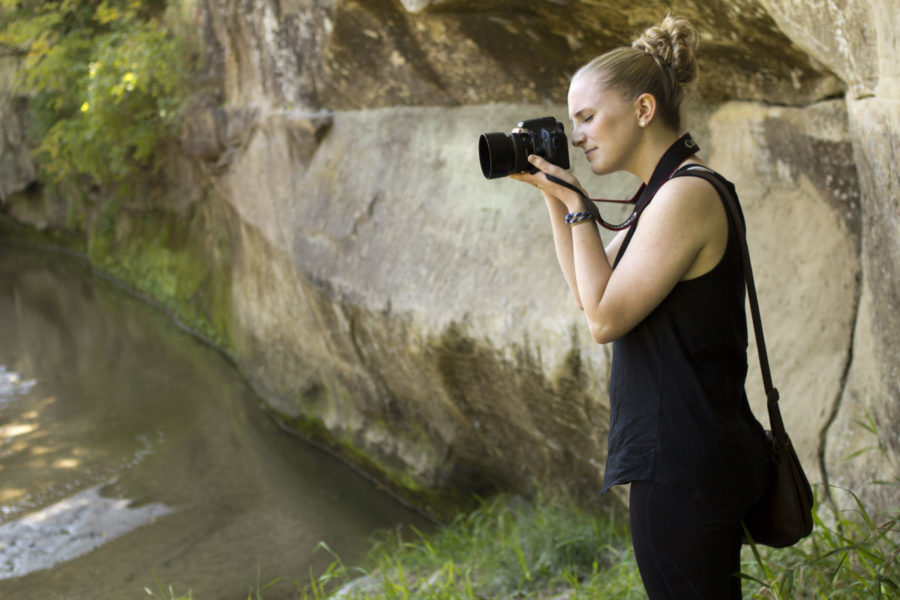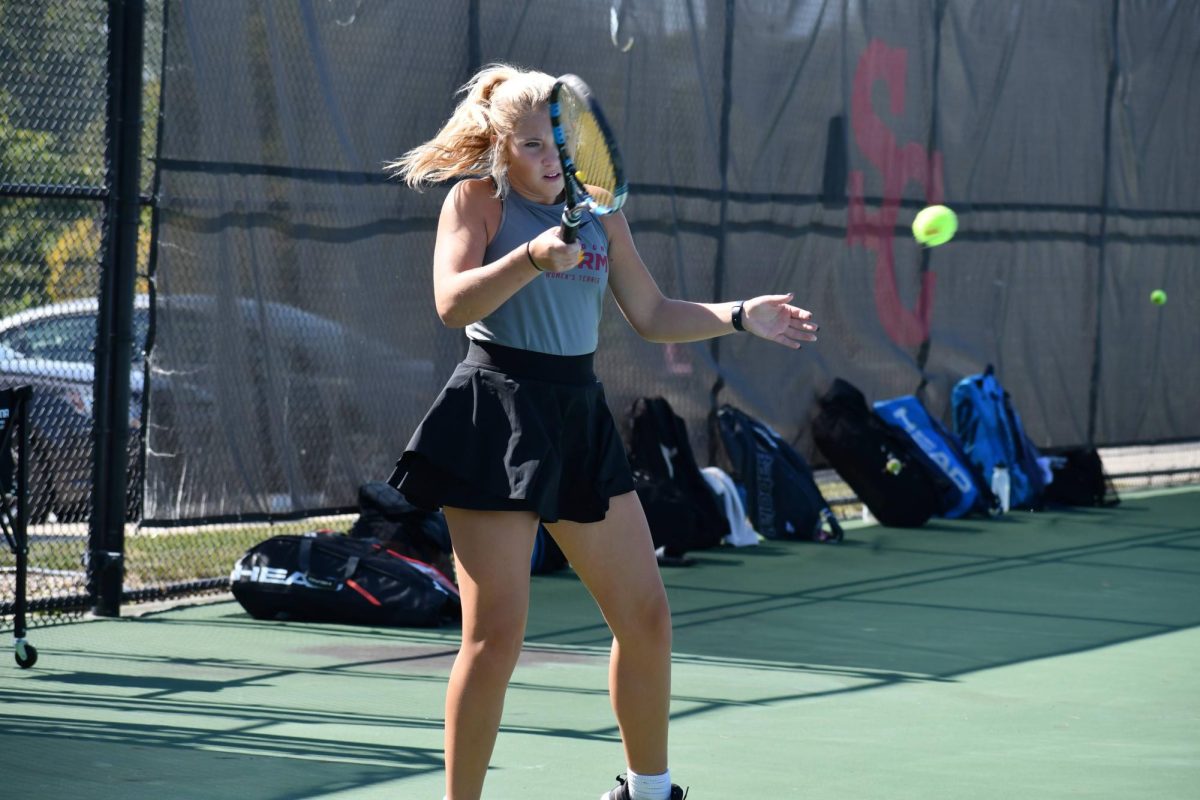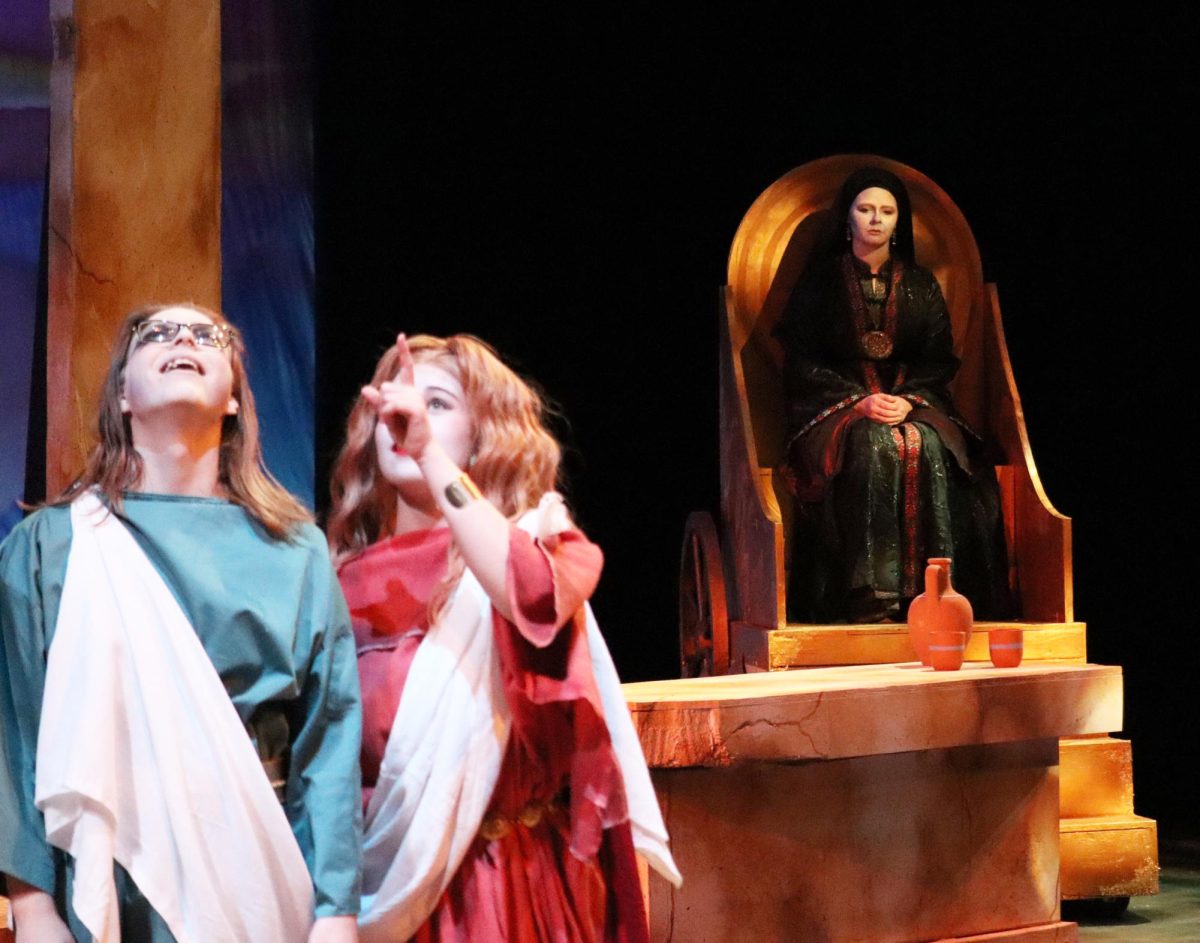Simpson Fine Arts: More collaboration needed?
January 28, 2015
What constitutes a competitive fine arts program? Simpson College appears to have the necessary ingredients: strong theatre arts, music and visual arts departments.
Simpson’s theatre arts department produces four shows per year: three full-scale productions and The Festival of Short Plays, led entirely by seniors. The students involved in theatre take their work as serious as a career.
“We don’t take things lightly,” Bill Hitt, junior theatre arts major, said. “We might not be going into acting or design, but we know to take it seriously. We’re more professional than other schools.”
The professionalism required by the theatre department is a large part of students’ development, according to Jennifer Nostrala, department chair of theatre arts.
“Essentially the theater we do is a laboratory for students to work in,” Nostrala said in an email. “They learn what they are doing through the process and at the end they really feel like they have accomplished something.”
The theatre department is not alone in its excellence at Simpson; the music department is also very impressive.
With a robust history, successful alums and a close partnership with the Des Moines Metro Opera, Simpson stands out among other schools in the world of music. Simpson students get opportunities to work on large-scale productions with internationally-acclaimed directors.
“The undergraduate experience students have at Simpson is almost unmatched,” Bernard McDonald, director of opera, said. “The interaction our students have with professional musicians is unique to Simpson.”
Performing arts are just one aspect of the fine arts on Simpson’s campus; the visual art department is also a strong presence on campus. The art department boasts a powerful sense of community in addition to its programs.
“We try to garner and develop a strong sense of artistic community,” department chair Gabrielle Rose-Curti said. “The art trips we do every year validate that. Our gallery program, showing student work and contemporary living artists, brings a cohesiveness to the whole experience of art.”
Sammie Moenning, a senior studio art and graphic design double major, agrees with Rose-Curti about the strength of Simpson’s art department.
“The department gives you a good background,” Moenning said. “I got more experience in other mediums than I ever thought I would. That puts you above bigger schools.”
Three strong departments. What more is necessary in a fine arts program?
Collaboration.
“I feel like all the majors are pretty segregated; we’re in our own little worlds,” Moenning said. “There are a lot of people I didn’t know were artistic. It’d be nice to have a way for us to get to know our fellow creative students.”
The performing arts have some experience with this. Last semester, the opera and the theatre department joined up to create Carousel.
“In many ways, it is a natural collaboration,” Nostrala said in an email. “In the business of opera and musical theater, it takes people trained in both areas to create a strong production.”
Bringing together the two strong performing art departments led to a very successful production. However, there is more that could be done on Simpson’s campus to link the fine arts.
“There are so many ties with the areas of fine arts,” Rose-Curti said. “From set design to basic choreography of figures on a stage, many aspects of visual arts would benefit someone in performing arts.”
As is, there is very little overlap in the separate departments.
“Simpson’s such a small college, we get sucked into one area because we’re dedicated to what we’re doing,” Hitt said. “But it’d be nice to have more bonding with the fine arts. We all support each other, we just don’t know each other.”
The integration of the departments could create a more definite sense of community on campus. The final products of the two arts are remarkably different, which can lead to people not seeing the connection. But in some ways, all art is the same.
“Dance, theater, art, they’re all about improvising,” Hitt said. “In fine arts, you don’t know what you’re going to create until you see the final product.”
Bringing together like-minded creative types, though difficult, would be beneficial to all fine arts students.
“Collaboration is hard,” McDonald said. “It requires investing time, meeting, exchanging ideas, occasional disagreements, but it is an essential skill set for both our faculty and our students.”






